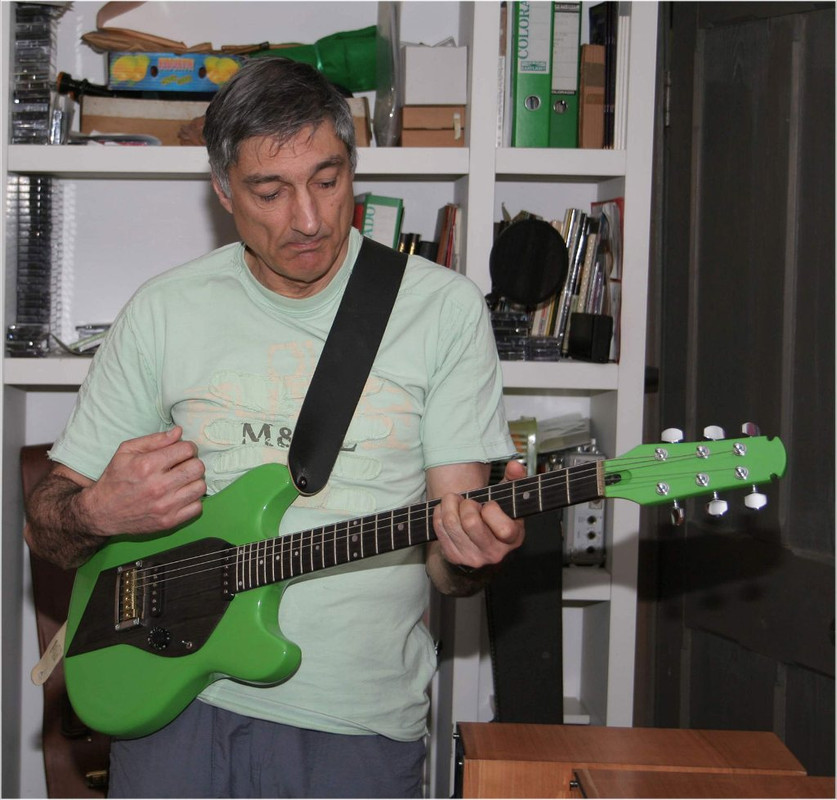I look forward to the Gandyvarius. Hopefully he won’t be doing saxophones so I won’t be tempted to upgrade mine. There again the software will still be pretty woeful."Better Violins". Ambitious. Always comes over as a top bloke.
You are using an out of date browser. It may not display this or other websites correctly.
You should upgrade or use an alternative browser.
You should upgrade or use an alternative browser.
Rega Naia
- Thread starter Aspro
- Start date
dave charlton
pfm member
I wonder too if the Ceramic bearing & sub platter spindle technology used in the Naiad would one day trickle down ...
Some more Naia (bearing) info -
Craig B
Re:trophile
The Regacaster certainly looked cool in green.I'm guessing that a Rega electric bass (low mass, high rigidity, etc) would be...well, a Steinberger basically.

yuckyamson
pfm Member
.
That depends on the bearing doesn't it ?...my turntable has a heavy platter but the bearing sees none of it as I built it as a fully maglev bearing ...my platter just floats.

That is a sick diy Schroeder.
And I've been selling it for the same amount of time..Rega have been making no nonsense hi-fi for fifty years.
Craig B
Re:trophile
Sensible hifi since 1973?And I've been selling it for the same amount of time..
yuckyamson
pfm Member
I heard that the difference between a P10 and a P9 was less than the difference between a P10 and a Naia
One friend told me in confidence (both privately and with assuredness) that the difference between the P10 and the NAIA was nary the same as the difference between his first wife and his last girlfriend: much smoother, better rhythm, lighter and ultimately worth the increased cost.
Tony L
Administrator
I'm guessing that a Rega electric bass (low mass, high rigidity, etc) would be...well, a Steinberger basically.
Have you ever picked one up? They are surprisingly heavy! Much the same as a Precision at around 4kg IIRC.
PS The modern wood ones are very light.
You've read the ad. Thank you.Sensible hifi since 1973?
Where has that time gone ?
Craig B
Re:trophile
I hear you, Dave. That is, at least as well as any fellow 'old timer' can.You've read the ad. Thank you.
Where has that time gone ?
Rega's revel of the Naia at the Bristol show was fact free apart from the price (£9,200 excluding cartridge). Given it looks similar to the P10 I would have thought they would have been keen to justify the extra cost by highlighting the Naiad features which are incorporated.Some more Naia (bearing) info -
This video describes the ceramic bearing although I don't understand how it removes the need for a sleeve. Presumably the graphene in the foam improves the stiffness/weght ratio compared with the P10 (and the Naiad?). Some figures would have been nice.
Interestingly the electronics guy talking through the turntable design doesn't mention the power suppply. Will this be part of a further video in 'Dance of the seven veils strategy'?
NickofWimbledon
pfm Member
Am I right in saying the Technics 1200G and 1000R tone-arms are magnesium, not titanium? Neither magnesium nor titanium has the strength-to-weight ratio of carbon fibre as far as I'm aware, but please correct me if I'm wrong.
Back in the dim past, I studied aeronautical engineering. If strength-to-weight ratio is the only important number, then I'd have to support you.
Craig B
Re:trophile
AFAIK no Rega bearing well has ever been sleeved, including the ceramic one used in Naiad. I suspect that the Rega fellow interviewed may have been commenting on how other makers resort to polymer sleeves within their bearing wells (Linn, for example, who should know how to do better than this). This isn't to suggest that there is no bearing well present, as that would be a very different thing.Rega's revel of the Naia at the Bristol show was fact free apart from the price (£9,200 excluding cartridge). Given it looks similar to the P10 I would have thought they would have been keen to justify the extra cost by highlighting the Naiad features which are incorporated.
This video describes the ceramic bearing although I don't understand how it removes the need for a sleeve. Presumably the graphene in the foam improves the stiffness/weght ratio compared with the P10 (and the Naiad?). Some figures would have been nice.
Interestingly the electronics guy talking through the turntable design doesn't mention the power suppply. Will this be part of a further video in 'Dance of the seven veils strategy'?
Also, it should be noted that this isn't an official Rega video covering Naia, only some select responses to questions from a subjective magazine reviewer at a show. Surely, Hi-Fi News and Record Review will eventually get to the bottom of all these Rega things that have been named for water nymphs (with Stereophile eventually copying their work).
Tim Jones
pfm Member
Back in the dim past, I studied aeronautical engineering. If strength-to-weight ratio is the only important number, then I'd have to support you.
I'm repeating myself here, but there are many different varieties of CF - high and low modulus, nanotube, etc. A lot of what purports to be CF is really just heated and stretched plastic under a pretty printed sleeve. Well, it all is in a way, but some is just nasty, full of voids, irregular, etc.
There are also distinctly different varieties of alu, usually mixed with other different elements - often scandium - to produce differing strength to weight ratios. 7005, 7003, 7075, 61.10, etc. There are at least two common commercial varieties of Ti - 3.2 and 6.4, with the latter being lighter and more rigid, but a pig to machine.
Even more boringly, "strength" also can refer to different things - most notably instantaneous rigidity (where alu is still very high scoring) as opposed to strength under torsion, etc.
NickofWimbledon
pfm Member
I'm repeating myself here, but there are many different varieties of CF - high and low modulus, nanotube, etc. A lot of what purports to be CF is really just heated and stretched plastic under a pretty printed sleeve. Well, it all is in a way, but some is just nasty, full of voids, irregular, etc.
There are also distinctly different varieties of alu, usually mixed with other different elements - often scandium - to produce differing strength to weight ratios. 7005, 7003, 7075, 61.10, etc. There are at least two common commercial varieties of Ti - 3.2 and 6.4, with the latter being lighter and more rigid, but a pig to machine.
Even more boringly, "strength" also can refer to different things - most notably instantaneous rigidity (where alu is still very high scoring) as opposed to strength under torsion, etc.
My apologies for getting you to repeat yourself.
I am hoping that this thread does not need discussion of Young's Modulus, or of resistance to deformation versus resistance to failure: life's too short.
kasperhauser
pfm Member
The Regacaster certainly looked cool in green.
ReGretsch?
(“…I’ve had a few, but then again, too few to mention…”)

